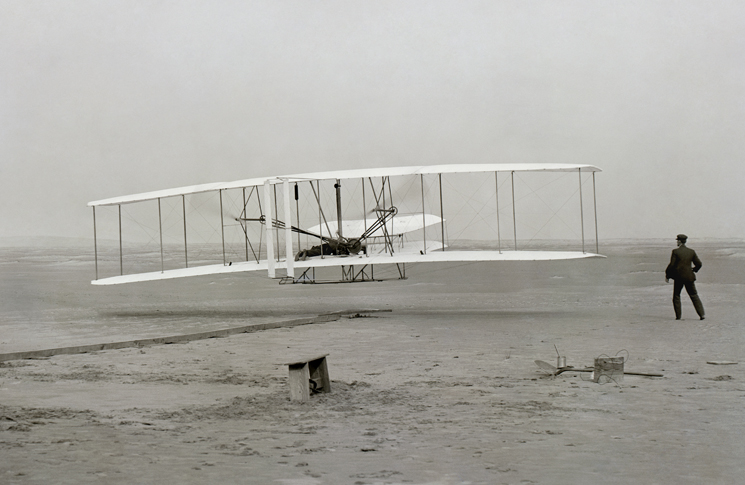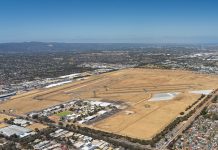
Safety management systems
Since the first plane crash that killed a passenger of the Wright brothers, aviation safety has followed the model of analysing what went wrong, and trying to do better in future, by making changes to technology or procedures. The death of soldier Thomas Selfridge in the Wright Flyer crash led to army aviators using helmets, for example. But this model of accident-based insight is not available to the nuclear or oil and gas industries, where a single accident can be catastrophic. Instead, these industries take a proactive approach to managing safety, based on a reporting culture and formal processes to ensure safety is managed like any other element of the business. Aviation is adopting this approach from the top down, with SMS being widely used in the air transport and military sectors but still a novel concept in some other corners of the aviation world.
16G seats
Seats in passenger aircraft cabins that can withstand a momentary sixteen times gravitational force have been mandatory on newly developed aircraft since 1988, when the US Federal Aviation Administration issued regulations requiring that all newly developed transport aircraft use them. Previous seats were designed and approved to a static 9G standard and had not had to pass crash test dummy testing and associated occupant injury criteria. The use of these stronger seats spread but was not compulsory until October 2005, when the FAA required transport category aeroplanes manufactured on or after October 27, 2009 to comply with the 16G dynamic standard. These seats, in association with other improvements have contributed to low casualties in crashes such as the Lion Air crash in Indonesia and the 2013 Asiana Airlines San Francisco crash.
Accident investigation
American Football coach Knute Rockne was a 1920s A-list celebrity. His death in an airliner crash in 1931 caused outrage and questioning, in the way celebrity deaths do and the deaths of ordinary people do not. Rockne’s legacy was formal, forensic-style, air crash investigation, with public release of the results. This had never been done before. The cause of the Rockne crash was found to be structural failure of the Fokker tri-motor’s wing spar. The US Department of Commerce reversed its policy of secrecy surrounding aircraft crashes and publicised the result of its investigation. The resulting public mistrust of wood in airliners accelerated the trend for all-metal aircraft to replace wood and fabric airliners, beginning the age of modern air transport.
ADS-B
See and be seen is a safety maxim of the roads, the sea and the sky. ADS-B is a technology that allows fast-moving aircraft to see and be seen by each other. It contrasts with radar-based air traffic control systems, where only the ground-based radar operator has the big picture. ADS-B, which stands for automatic dependent surveillance- broadcast, is a nexus of satellite and instrument-derived speed, height and direction information with avionics which can both broadcast an aircraft’s information, and show the position of other aircraft on a cockpit display. The implications for safety and efficiency are far-reaching.
Airspace categories
The earliest airspace categories were official air routes, the first of which were created after two airliners collided head-on over France in 1922. By the 1930s some airports had controlled airspace around them, although it was not until 1990 that the international Civil Aviation Organization (ICAO) defined seven classes of airspace to be used worldwide. Australia completed its adoption of the ICAO airspace system in June 2010, when class D airspace replaced general aviation airport procedures (GAAP) at general aviation aerodromes in major cities.
Autopilot
Lawrence Sperry demonstrated the first autopilot in dramatic fashion in 1914. He left the cockpit of his biplane and walked on the wing, while a mechanism linked to a gyroscope kept the aeroplane flying straight and level. Wiley Post used an autopilot on his solo circumnavigation of the world in 1931 and by World War II they were in use on bomber aircraft. Autopilots were sufficiently developed by 1947 for a C-54 (the military version of a DC-4) to fly across the Atlantic (including take-off and landing) without manual control. Rather stiffly, Flight International described the C-54’s autopilot as ‘a sort of glorified electrical alarm clock’. Aviators since Post have appreciated the autopilot’s ability to allow the human pilot to manage the flight rather than just controlling it.
A,B,C and D-checks
Transport category aircraft are subject to a series of checks to ensure they stay airworthy. Including daily inspections, there are five levels of check. After about 300 hours an A-check is carried out. This involves more extensive checks than a daily inspection and is performed by maintenance personnel. The next check is a B-check but operators will commonly also do a partial C-check, to avoid lengthy time out of service. This practice is called equalised maintenance.
The D-check involves a very detailed inspection of the whole aircraft. Items as landing gear and control surfaces are removed for service and interior equipment, such as seats and galleys,is also removed for refurbishment. The D-check is both costly and time-consuming. Many operators sub-contract this work, or sell their aircraft when it becomes due. A typical D-check takes up to 35,000 hours of labour, and can take an aircraft out of service for a month.
Bleed air
Turbine engines have a wonderfully useful by-product: heated compressed air from the compressor section of the engine (the heat comes from its compression, not burning fuel – that happens further along the engine.). This hot air has many uses in an aircraft, from starting the engine, cabin pressurisation and heating to flushing the toilet. One of the safety-critical uses of bleed air is anti-icing, by routing it into tubes with lots of small holes (like a lawn soaker hose) through wings, tail surfaces, and engine inlets.
Alloys
When Jules Verne imagined space flight in his 1865 novel From the Earth to the Moon, one of the details he included was high-strength, low-weight aluminium alloys. That detail proved more enduring than the idea of sending astronauts into space from a giant cannon. By 1909, duralumin, an alloy of aluminium, magnesium and manganese, had been developed, and was adopted primarily for airship construction. Aluminium alloys are invaluable to aviation because of their properties of light weight, strength and resistance to corrosion and deterioration. Their early adoption in the airship industry enabled the development of all-metal aeroplanes such as the epoch-making Douglas DC-3.
Aviation medicine
The body of knowledge about the effects of aviation environments predates the aeroplane. Tragic discoveries about the effects of lack of oxygen and extreme cold came from the experiences of pioneering balloonists. Aviation medicine studies how the environment and stresses of aviation affect the body and mind. Its fields include study of perception, hypoxia, atmospheric pressure, fatigue, stress, and human performance. An important sub-branch of aviation medicine is testing and screening of aircrew to ensure their fitness to continue flying. Aviation medicine pays particular attention to screening for conditions that are sudden and debilitating because of the obvious hazards to flight safety that they present.



